Posts by: Hamish Johnston
Great wrong theories, new spin on golf, physics photo competition
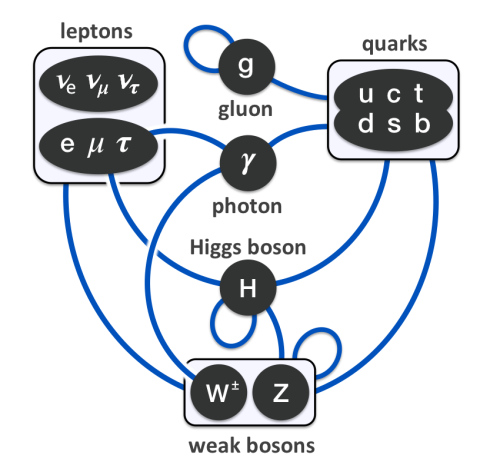
The Standard Model: wrong, but wonderfully wrong (Courtesy: Eric Drexler)
By Hamish Johnston
What is the greatest wrong theory in physics? Physicist Chad Orzel asks that question in his latest blog for Forbes and by wrong he does not mean incorrect, but rather incomplete. He makes the argument for the Standard Model, which he says has been wrong for a very long time – but continues to be phenomenally successful.
View all posts by this author | View this author's profile
Quantum quartet is on the cards
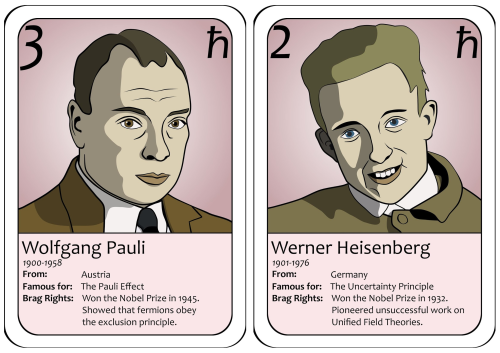
Quantum pair: Wolfgang Pauli and Werner Heisenberg (Courtesy: Sabine Hossenfelder)
By Hamish Johnston
Theoretical physicist and blogger Sabine Hossenfelder has created a lovely set of cards featuring pioneering quantum physicists. You can see my two favourites above.
Resembling football or baseball cards, they each feature a portrait plus a fact or two about the physicist – including a salacious aspect of Erwin Schrödinger’s personal life. You will have go to Hossenfelder’s blog to learn more about that – and see the rest of the cards, including a feline “Bra-ket” as the joker of the deck.
View all posts by this author | View this author's profile
Reminiscing about Fermilab, CAPTCHA tests your physics, science of guitar strings
By Hamish Johnston
What do huge snowstorms, pioneering childcare and bison have in common? The answer is that they all feature in video recollections of Fermilab, the particle physics facility that is celebrating its 50th anniversary this year. A playlist of the videos is available and you can watch Cindy Joe’s musings over Snowpocalypse 2011 above.
According to physics blogger ZapperZ, the online retailer Amazon is developing a new CAPTCHA technology that relies on human’s innate understanding of the laws of physics. The idea, apparently, is that a user would be presented with before and after scenarios and asked which seem plausible. This could be a ball rolling down a ramp, or a projectile flying through the air. It seems that web robots can’t solve simple mechanics problems – at least for now.
Ending on a bright note, music technologist and erstwhile physicist Jonathan Kemp of the University of St Andrew’s in Scotland claims to have invented a revolutionary type of guitar string. He riffs on his new creation in the video above.
View all posts by this author | View this author's profile
Prize-winning astronomy image, the ultimate cost of Cassini, amazing facts about lasers
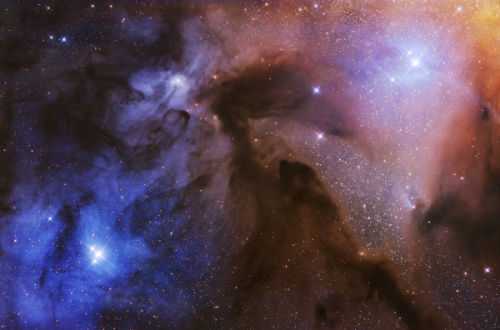
Prize winning: the Rho Ophiuchi Cloud Complex captured by Artem Mironov (Courtesy: Artem Mironov)
By Hamish Johnston and Michael Banks
Hats off to the Russian photographer Artem Mironov, who has beaten thousands of amateur and professional photographers from around the world to win the 2017 Insight Astronomy Photographer of the Year. The award is in its ninth year and is run by the Royal Observatory Greenwich together with Insight Investment and BBC Sky at Night magazine. Mironox’s image, which was taken over three nights from a farm in Namibia, is of the swirling dust and gas clouds in the Rho Ophiuchi Cloud Complex. The object is situated approximately 400 light years away from Earth and is home to a cluster of more than 300 protostars. As well as winning the £10,000 top prize, Mironov’s image will be on display along with other selected pictures at an exhibition at the Royal Observatory that will run until 28 June 2018. The competition received over 3800 entries from over 90 countries. (more…)
View all posts by this author | View this author's profile
Why is quantum physics so hard to write about?
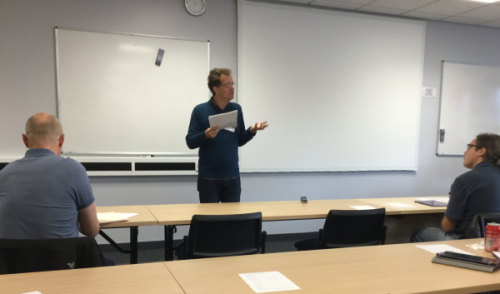
Live at Leeds: George Musser riffs on writing about quantum mechanics (Courtesy: H Johnston)
By Hamish Johnston
Why is quantum physics so hard to write about?
That was the theme of George Musser’s keynote talk at a seminar for science communicators held this week at the University of Leeds. Musser – who has written extensively on topics such as quantum entanglement and string theory – gave several reasons and here are a few that stuck in my mind.
(more…)
View all posts by this author | View this author's profile
A punt on Planck, physicist puts Frankenstein to music, would Brian Cox cope on Mars?
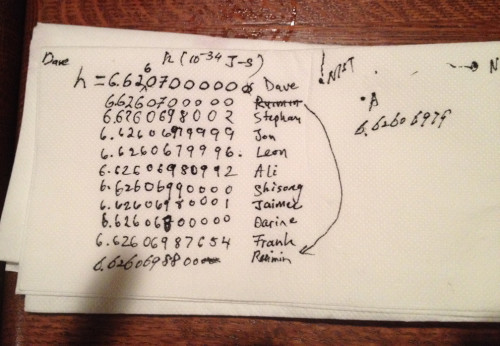
Fancy a flutter? The NIST napkin. (Courtesy: NIST)
By Hamish Johnston
A paper napkin with a load of numbers scrawled on top has been an unusual source of excitement for physicists at the US National Institute of Standards and Technology (NIST) in Gaithersburg, Maryland. One evening in December 2013, a group of them had gathered at a local watering hole to celebrate the success of NIST’s latest watt balance – NIST-3 – that had just determined Planck’s constant to a new accuracy. While enjoying “happy hour”, NIST researcher Dave Newell pulled out a napkin and the 10 researchers began to write down their predictions for the final value of Planck’s constant that NIST would submit to the International Bureau of Weights and Measures in Paris to help redefine the kilogram. The researchers then sealed the napkin in a plastic bottle and buried it inside a cavity within the foundation of NIST-3’s successor NIST-4, which was then being constructed.
View all posts by this author | View this author's profile
The sounds of Saturn, dancing particles, distracted funding agency
By Hamish Johnston
Astronomy can be a highly visual science and therefore developing ways of sharing data with visually impaired colleagues – and the public – is an important challenge. Sound offers one way forward, as astrophysicist Wanda Diaz Merced explains in “The sounds of science”. Now, fellow astrophysicists Matt Russo and Dan Tamayo at the University of Toronto have converted the motions of the rings and moons of Saturn into two musical compositions. You can listen to a composition based on the orbital frequencies of moons and rings by playing the video above. The second piece is called “Resonances of Janus translated into music”.
View all posts by this author | View this author's profile
LIGO–Virgo comments on neutron star rumours, sort of
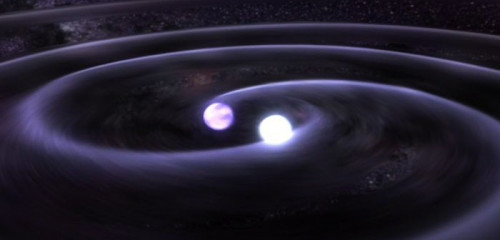
Caught in the act: has LIGO–Virgo detected merging neutron stars? (Courtesy: NASA)
By Hamish Johnston
Have gravitational waves from merging neutron stars been detected for the first time?
Physicists working on the LIGO and Virgo gravitational-wave detectors have issued a statement that appears to be a response to rumours that both gravitational waves and electromagnetic radiation from an astronomical event have been detected.
LIGO has already detected gravitational waves from three different binary black-hole mergers. But none of these events appeared to emit electromagnetic radiation that could be detected by astronomers using telescopes on Earth or in space.
View all posts by this author | View this author's profile
The Doomsday Clock ticks over 70 years, an exoplanet Westeros
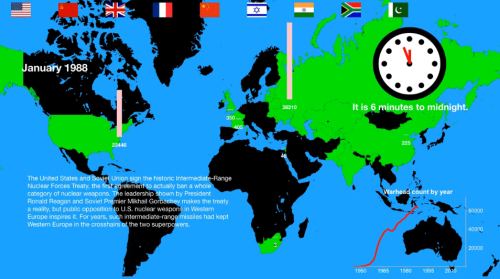
Circa 1988: the Doomsday Clock during safer times. (Courtesy: The Bulletin of the Atomic Scientists)
By Hamish Johnston
This year marks the 70th anniversary of the Doomsday Clock that is produced by The Bulletin of the Atomic Scientists. Currently at two and a half minutes to midnight, the clock represents the likelihood of a human-caused global catastrophe. Originally, it focused exclusively on a nuclear Armageddon, but in 2007 climate change and other technologically-driven processes were added to the mix. The clock was initially set at seven minutes to midnight in 1947 and the Bulletin has produced a video that charts the ups and downs over the past seven decades. Is there any good news? In the image above you can see that South Africa was a nuclear power in 1988, and it has since disarmed.
View all posts by this author | View this author's profile
Snapping the Milky Way, art inspired by SLAC blueprints, doppelganger magazine covers

Top tip: use a remote shutter control. (Courtesy: Clifton Cameras)
By Hamish Johnston
If you are lucky enough to live somewhere with dark skies, you know that the Milky Way is a truly majestic sight. But how exactly would you go about capturing its magnificence with a camera? UK-based Clifton Cameras has put together an infographic with a few helpful hints. The image above is an excerpt and you can view the entire infographic here.
View all posts by this author | View this author's profile